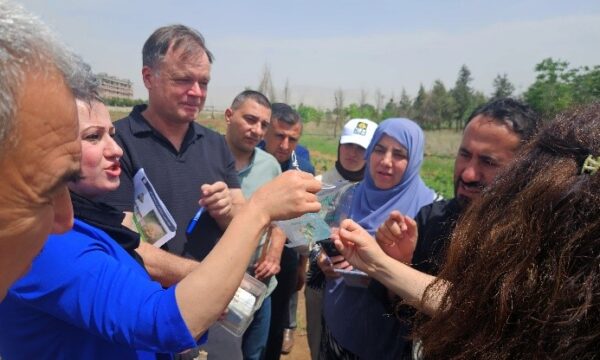By Stephanie Parker. Reblogged from Earth Island Journal.

Since fall armyworms invaded his maize fields in central Ethiopia last year, Mohamud Abdu has had little success controlling them. He estimates that he lost 50 percent of his crop in 2017. Photo: Stephanie Parker
Mohamud Abdu stands tall in his maize field in Alaba, Ethiopia, a small agricultural district over 200 kilometers south of the country’s capital, Addis Ababa. Smooth green leaves reach up to his waist. The field is off a dirt road where children ride old bicycles and the occasional wooden cart, pulled by donkeys and piled high with people, passes by.
The sea of green where Abdu stands looks lush and healthy at first glance. The maize stalks are planted closely together and the leaves rustle gently in the wind. But upon inspection, these leaves are riddled with holes and plant detritus litter the remainder. Abdu pries open the whorl of a nearby maize plant with his fingers, and takes out a small caterpillar, roughly an inch long. It squirms on his palm.
Related News & Blogs
Biological control in action: Zambia’s field days on fighting fall armyworm
Experts from CABI recently held two field days and an expo in Zambia, showcasing innovative approaches to pest management to 584 farmers, agro-dealers and other stakeholders to help raise awareness of approaches to tackle the invasive fall armyworm (Sp…
11 June 2025




